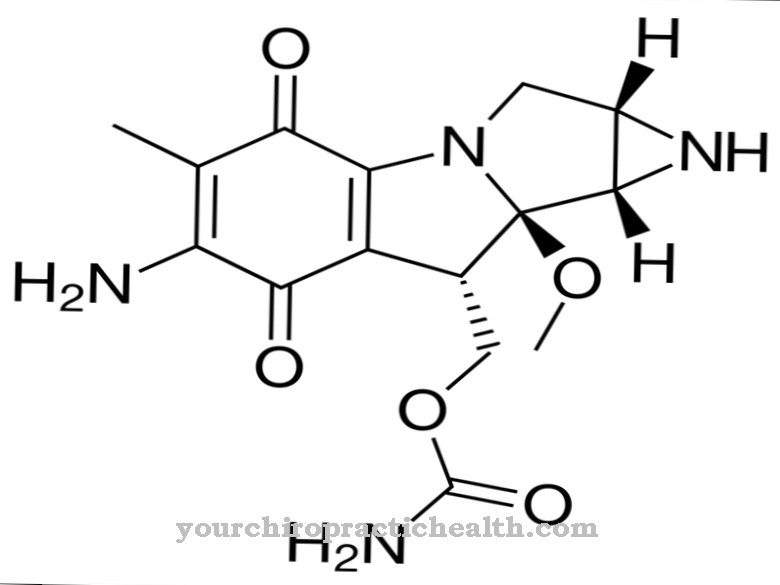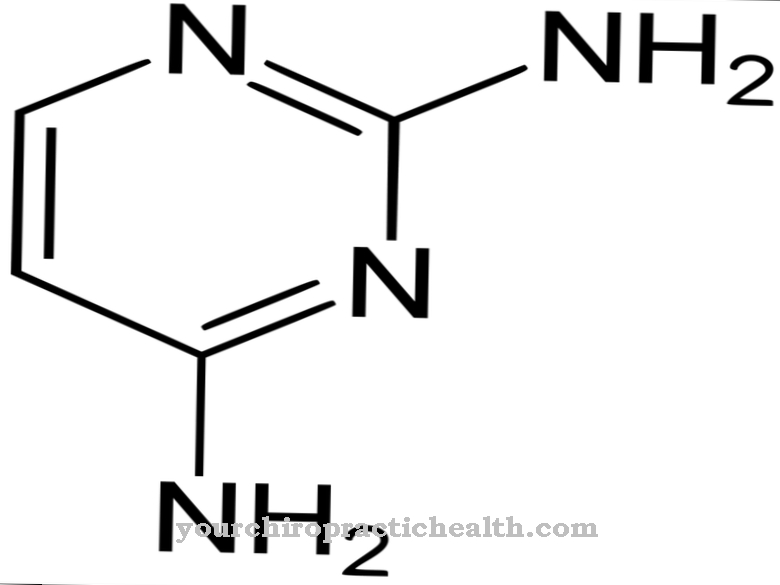As Triptan is the name of a drug that is used to treat cluster headaches and migraines. The triptans are particularly suitable for combating moderate to severe migraine attacks.
What is triptan?

Triptans belong to the group of migraine drugs and are used for acute migraines and cluster headaches. By narrowing the blood vessels, they can reduce inflammation and reduce discomfort.
Medicine has known since the 19th century that migraine attacks are associated with the dilatation of cerebral and cranial blood vessels. With the observation that the messenger substance serotonin also resulted in a constriction (constriction) of the pathologically dilated vessels, the development of the drug triptan began. However, serotonin was unsuitable as a treatment for migraines due to its severe side effects on the heart, circulation and stomach. For this reason, medical research tried to arrive at a serotonin derivative with which it is possible to selectively contract cerebral blood vessels without causing systemic side effects.
At the beginning of the 1980s, an active ingredient, 5-carboxamidotryptamine, was discovered with which 5-HT1 receptors could be selectively stimulated. However, this substance also showed systemic side effects on the cardiovascular system. Therefore, the substance was not clinically developed.
Only a short time later, a 5-HT1B / 1D receptor agonist was discovered with the drug sumatriptan, with which it is possible to selectively contract cerebral blood vessels. In December 1992 sumatriptan was approved as a migraine preparation by the American FDA.
Sumtriptan, however, had the disadvantage of only having inadequate oral bioavailability.Another negative point was that the active ingredient could not sufficiently cross the blood-brain barrier. Therefore, medical research developed other 2nd generation triptans that had better pharmacokinetic properties.
At the end of the 1990s the triptans zolmitriptan, rizatriptan and naratriptan came onto the market. Frovatriptan, almotriptan and eletriptan were subsequently developed.
Pharmacological effect
The effect of the individual triptans is based on a binding to the receptors 5-HT-1B, 5-HT1D and 5-HT1F. This leads to a vasoconstriction (vasoconstriction) of the cerebral blood vessels. At the same time, the release of inflammatory mediators such as CGRP and the substance P is inhibited. The spread of pain stimuli via the cerebral cortex is slowed down by the triptans.
Unfortunately, the triptans do not have the same positive effect on every patient. Roughly a third of all migraine sufferers respond well to the active ingredient, while a further third at least relieves pain. In the remaining third, the triptans have no effect at all.
If a pain-relieving effect is seen, it usually sets in after three to four hours. However, many patients suffer from headache again only a few hours after the administration of the migraine drug.
The mechanism of action of the different triptans is identical. However, there are differences in the pharmacokinetic properties. This includes the beginning and duration of the effect as well as the elimination time.
Medical application & use
The triptans are used against acute moderate and severe migraine attacks. However, they are not suitable for preventing migraines. They can also be used to treat cluster headaches.
The use of triptans can be done in different ways. Conventional tablets, orodispersible tablets, water-soluble tablets, nasal sprays, suppositories, pre-filled syringes and needle-free injectors are available.
It is recommended to take the triptans only after the aura phase, when the headache phase sets in. The sooner it is taken, the greater the chances of therapeutic success. However, the triptans should not be administered more than ten times a month, as otherwise there is a risk of drug-induced headache.
With the exception of naratriptan, triptans are subject to prescription in Germany.
Risks & side effects
Taking triptans can be associated with undesirable side effects. These primarily include dizziness, slight weakness, abnormal sensations such as tingling, slight nausea and feelings of warmth.
In some cases, a temporary rise in blood pressure or an angina attack is also possible. It is believed that these side effects are due to stimulation of the 5-HT1B / 1D receptors in the cardiovascular system. Skeletal muscle disorders, circulatory disorders or cardiac arrhythmias can only occur very rarely.
The intake of triptans is not suitable because of their vasoconstricting effects if the patient suffers from vascular diseases, high blood pressure or coronary artery disease (CHD). Other contraindications include Raynaud's syndrome, a previous heart attack and severe kidney and liver dysfunction. Taking triptans during pregnancy and breastfeeding is not recommended.
Caution is also advised against interactions with other medicinal products. Coronary artery spasms can occur through the joint use of ergot alkaloids such as ergotamine, which are also migraine drugs. For this reason, taking them together should be avoided. The administration of MAO inhibitors often results in a slower breakdown of the triptans from the organism.



























